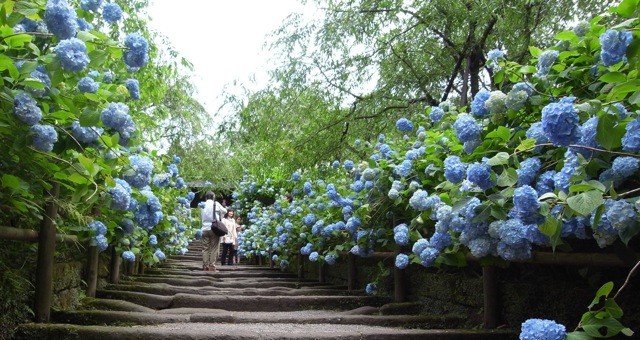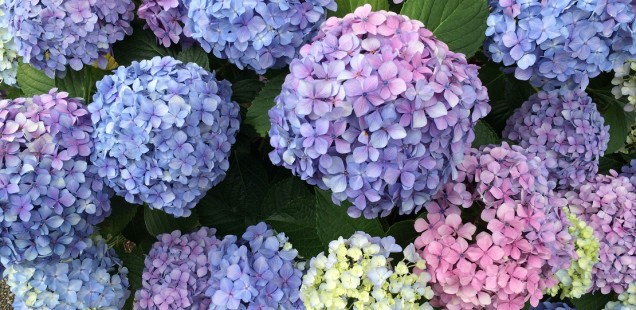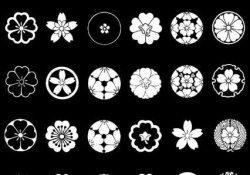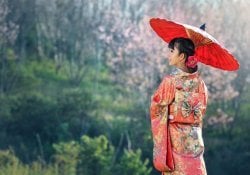Japan is famous for its sakura blooming spring and colorful autumn leaves, but summer is not left out either. At the beginning of summer, during the rainy season, Japan is full of hydrangeas.
In Japan, the hydrangea (紫陽花-Ajisai) is considered the flower of the tsuyu, the rainy season. The rainy season usually lasts for a month in mid-June and July. Hydrangea originated in Japan and China, they say its original color is blue, but there are all kinds of colors like pink, purple and white according to the cultivation and soil.
You can find hydrangeas everywhere, in homes, temples, fields and gardens. Some provinces organize hydrangea plantations and even festivals
One of the best places to see hydrangeas is in the city of Kamakura, especially at Tokeiji and Meigetsuin temples. There you can find a large path surrounded by colorful hydrangeas. But there is always a park or temple with hydrangeas all over Japan.
Meaning
Hydrangea can be seen as a symbol of devotion, obstinacy, dignity, honor and deep feelings. The first characters that make up the word ajisai mean purple or violet.
Hydrangea also has another name in Japan besides ajisai. Hydrangeas can also be called 七変化 nanahenge which means seven transformations. It got this nickname because of the colors of the petals that change according to the composition of the soil.
This has given great symbolic meaning in Japanese art and poetry, because the changing colors represent a fickle and changeable heart. Warriors in feudal times rejected hydrangea because of this constant change of color.
Finally, we will leave a video showing some of these beautiful flowers. Hope you enjoyed the article, don't forget to share and leave your comments.






